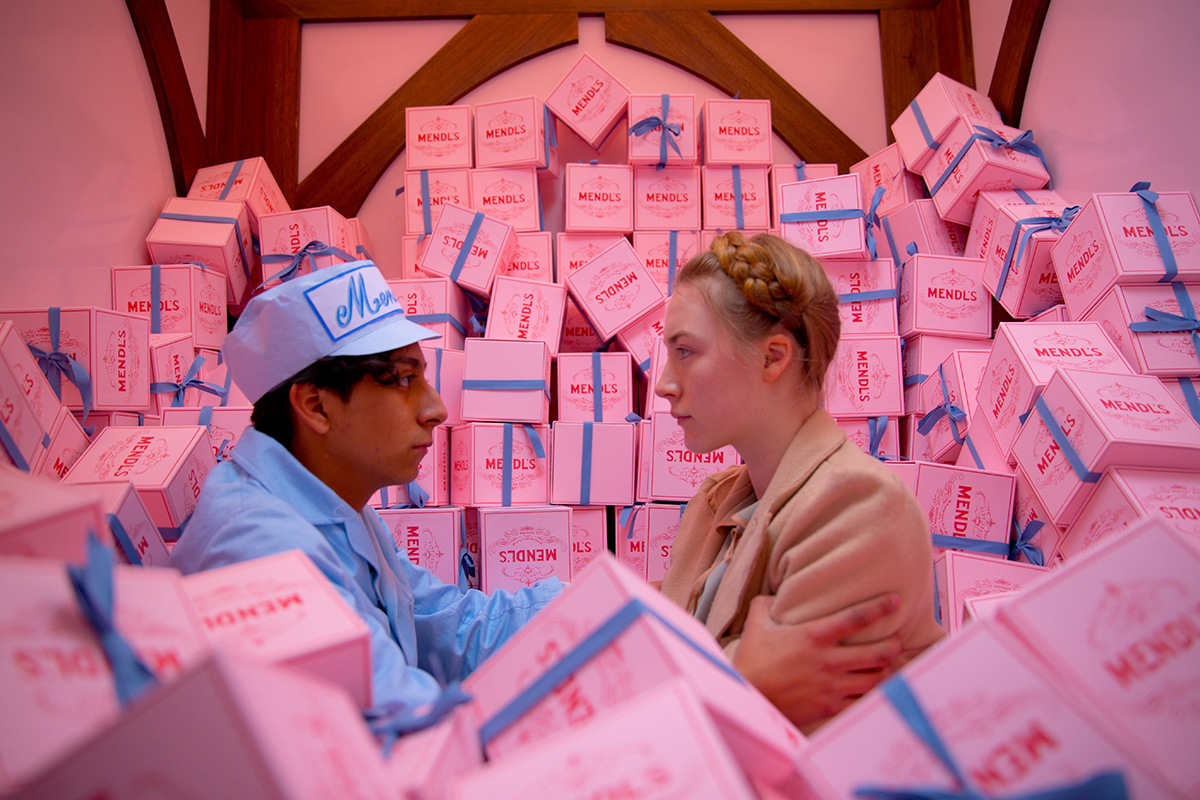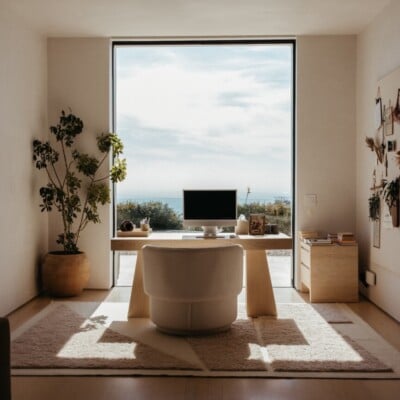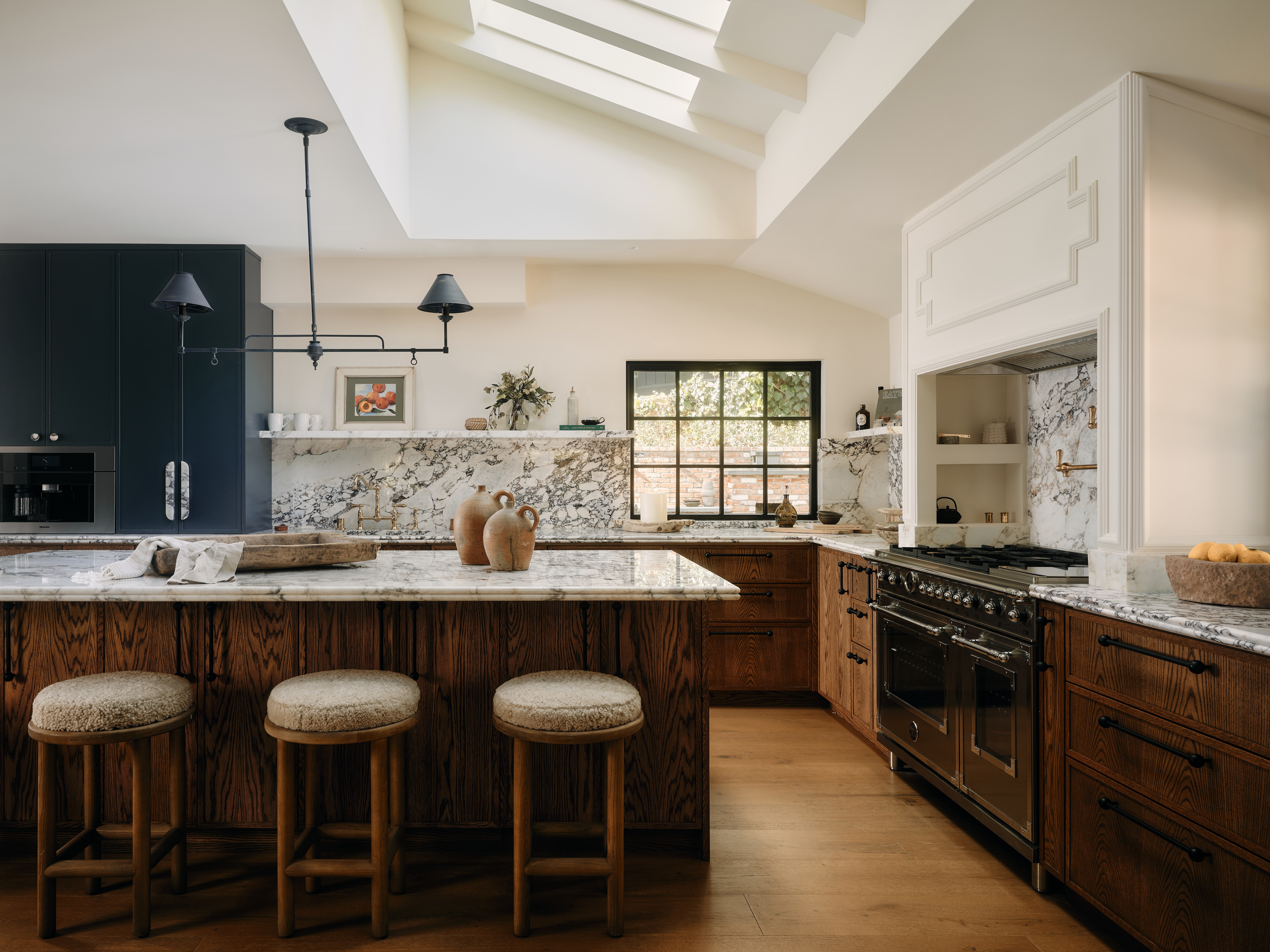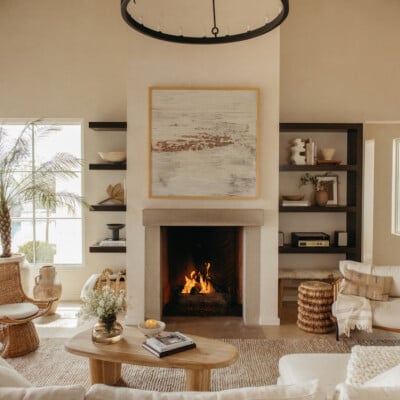Undeniably, no filmmaker has been more influential over an entire generation of bloggers, ad geeks, and instagrammers than Wes Anderson. From our overhead shots of supplies to our love of Futura, his influence runs deep. And just when we think we’ve got him pegged for tracked out sans serif, he’ll drop a caution yellow script on us (à la Moonrise Kingdom). We can never wait to see what he’ll do next visually, and what magic he’ll create with his hand-picked team of talented production designers. Graphic designer Annie Atkins is one such artist — she worked alongside Wes to create all of the graphic elements for his most visually stunning movie to date, The Grand Budapest Hotel. The Dublin-based designer worked in advertising and film for years before she got the call from Wes. And it’s a gig that’s undeniably changed her life. (Since we interviewed her, the film was nominated for nine Academy Awards and took home four wins including Best Production Design!) Annie’s already busy wrapping up her next big project, Stephen Spielberg’s upcoming Cold War spy thriller due to release later this year. Join us as we spend an afternoon with this incredibly talented designer to talk about her creative process, how she got her big break, and what it was really like to work for Wes.

What do you love about your job?
Every time I start a new show or film it’s thrilling. No two films are ever the same – there’s always a new genre or period or style that I have to immerse myself in. Learning about graphic design from other eras is fascinating, but it’s also high-pressure as you don’t have long in pre-production before you need to start churning this stuff out.

Did you study graphic design at a portfolio school or university?
Yes, I studied graphic design at University, at Ravensbourne in London when I was in my early 20s, and my father is a graphic designer too so I had already learnt a lot from him. Before that I did a foundation course in art at a college in North Wales, where I studied under the great Welsh landscape painter Peter Prendergast. He taught us not to be precious about our work – he showed us how to rip it all up and start again. That was my most formative year!

Have you always done design work strictly for film or did you do commercial graphic design first?
After I graduated I went straight into advertising. I was in Reykjavik in Iceland for 4 years, working my way up from junior designer to art director. Then I moved to Ireland to study filmmaking. I remember the head of the course saying that we might all want to be directors at the beginning, but most of us would have a niche in filmmaking that we had never considered before by the time we left. I certainly hadn’t considered the art department – I had pictured myself with a camera on my shoulder. But of course this is the perfect area for me, as I was able to amalgamate my design and storytelling skills through making the graphics that are seen on the set.

Tell us about the first “big break” in your career: what was it and how did you land it?
My first job on a set was on the TV show The Tudors, back in 2007. I had just graduated from film school and Tom Conroy the production designer had taken me on to the third season. It was so, so exciting. I worked on TV shows here in Ireland then for years, until one day I got a call from Wes Anderson’s producer. That was a shock. It was the last thing I was expecting. I still can hardly believe it now – it was the luckiest break I could have hoped to have imagined.

What does your typical day look like? Do you have a studio space where you spend time? Do you listen to music, meet with collaborators, look at inspirational materials?
I wish I could tell you that most of my day is spent listening to music and leafing through books, but I’m afraid it’s pretty far removed from that! I turn on my computer at 8am and from then on it’s nose to the grindstone until about 7pm, barely stopping for lunch. The volume of work you have to produce on a film is huge, so I move quickly between my screen and my drawings getting stuff out as fast as possible, while also taking endless phone calls from the construction crew, props, the set dressers, and the vendors. At the moment I’m freelancing from my own studio in Dublin, so it’s a little more relaxed, but I still don’t listen to music! I find it distracting.

Tell us a bit about your creative process when designing in an art department. Do you start with the script and a general direction from the filmmaker? How do you present your concepts? Once they’ve been finalized, how do you execute your designs?
As soon as I start a job I’m sent the script and I compile a script breakdown of everything and anything that sounds like it might be a graphic. They can be very obvious things—like a character reading a newspaper—or they can be things that you have to assume the set is going to need that aren’t necessarily scripted, like shopfront signage for street scenes. The art department is headed by the production designer, who oversees the style of the entire movie, and the set decorator and prop master furnish the sets, so I work closely with them, too, making sure they have everything they need. I also liaise with the art directors, who are in charge of the drawing and construction of the sets themselves.

What’s your favorite project you’ve worked on yet?
There are different projects I love for different reasons – Penny Dreadful was the most fun because I love Victorian sign writing, The Boxtrolls was an amazing experience because it was all stop-frame animation, and we were building an entirely imaginary world. But The Grand Budapest Hotel is the shiniest gem in my resume – and the one I hold closest to my heart! – partly because it was an extraordinary experience living with Wes and his crew for that winter in the snow, and also because the graphics were such an integral part of the storytelling.

What was it like to work with Wes Anderson? Any good behind-the-scenes stories from the set or production that you could share with us?
Wes is extraordinary. He pays a massive amount of attention to every aspect of his filmmaking – not just the graphic design, but to make-up, costume, construction, everything. It was so exciting being there with him after knowing his work for so many years, because all of a sudden it was like being inside that world, like we were one big crazy Wes Anderson family from one of his movies.

Do you get to keep any of the items you create for film?
When you make graphic props you have to make “repeats”, which are just multiple exact copies of everything you send to set. If an actor has to open an addressed envelope in shot, for example, you have to make 30 identical addressed envelopes so that they can shoot as many times as they like. Other pieces maybe just need 3 copies, in case they get dropped in a puddle or spilt coffee over on set. Then you have to keep one piece back in case everything goes missing and you need to copy it again at the last minute. So yes, there are some stray bits and bob that end up coming home with me…

When did you know that you wanted to pursue graphic design?
Oh, since I was about 5! I wanted to be a graphic designer like my dad.

Do you have any exciting upcoming projects you’d like to share with our readers?
We just wrapped up shooting Spielberg’s new Cold War spy thriller in Berlin… it’s due to be released later this year. It was the most modern period I’ve worked to yet – the 1960s, so that was a fun one.

If someone wanted to get into doing graphic design for film, what advice would you offer them in terms of getting their foot in the door and starting a career?
First of all you should study design, specifically graphic design and art history, or film production design. Then try to arrange a portfolio review with an art director at your local film or TV studio. These jobs usually start with internships so prepare to get your hands dirty. Wear old clothes and never use glue on the cutting mat!
Thank you, Annie! We can’t wait to see what you’ll do next.
See more of Annie’s work for The Tudors, The Boxtrolls, and other film projects here. And keep your eyes peeled for that Spielberg spy thriller later this year!





I die! I want to be her when I grow up.
I absolutely noticed this stuff in the movie and I loved it. It was my surprise favorite film of the year party due to her hard work!
This looks amazing!!
Fascinating! And truly a dream job!
Oh this was interesting to read, only yesterday I started learning Adobe Illustrator… the teacher uses a Wacom tablet and I don’t have one so I had to trace a flower with my mouse, for a beginner it can be a little frustrating, I wanted to throw myself off a bridge. But just before jumping I discovered I could use my iPad, all was well in the world again. Thank you for this post, its good to learn how graphic design works in different industries, helps me with my future plans!
So interesting. Thank you for such an inspiring post!
That’s so amazing, great post 🙂
Budapest Hotel 🙂
Oh – thank you for sharing such great work and inspiring interview. What a treat to get to see close ups of the elements she designed.